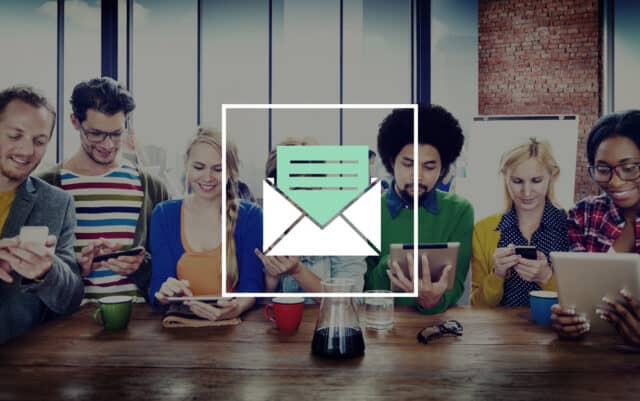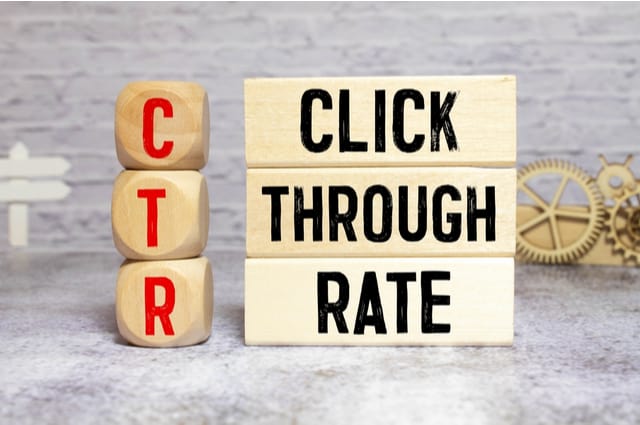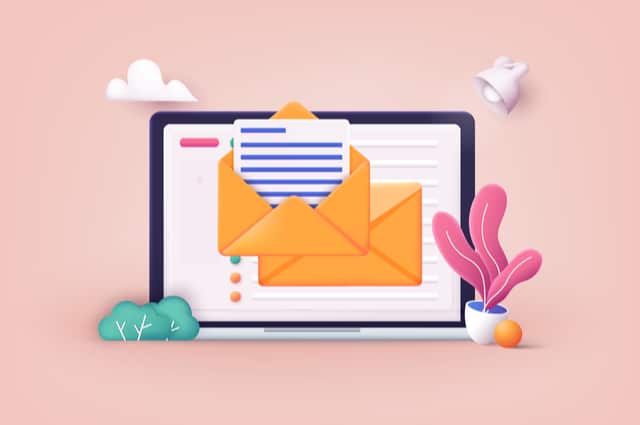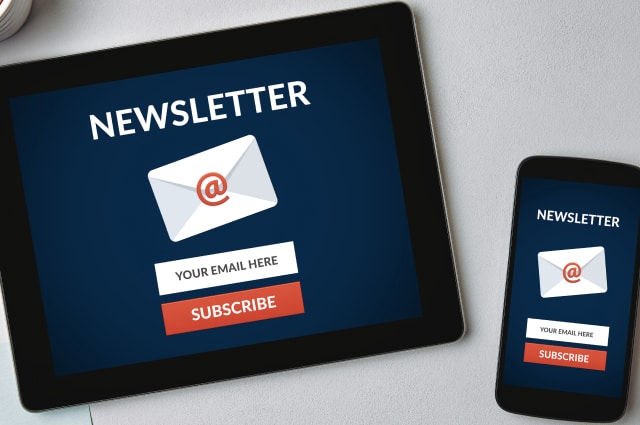Email Personalization: What are the Benefits of having a Customized Email?
You can send emails to your customers if you have a company blog or a website. But if you want to make sure that your message reaches them, you should start personalizing your email. This increases the likelihood that they will read and respond to your messages. This process of creating personalized emails is called “Email Personalization”.

Consumers, both online and offline, want and anticipate relevant and personalized content and experiences. To satisfy these expectations, marketers are attempting to use email personalization. It helps to progress toward one to one interactions that surpass customer expectations and distinguish them apart from the competition.
Personalizing emails involves taking information from your website and using it to customize your emails. You could use this data to send targeted emails to your target audience. In addition, you can also use it for other purposes, like improving customer retention rates, boosting sales, etc.
Email Marketing Personalized Strategy
The first step in email personalization strategy is gathering data about your visitors and website behavior. This includes customer journey, their interests, demographics, buying habits, browsing history, etc. Once you have gathered this data, you need to decide which kind of content would best suit your target audience.
If you are promoting the products online, you may want to include product images, prices, descriptions, and so on. If you are trying to sell services, you may want to include testimonials, pricing, contact details, etc.
Once you have decided on the type of content you want to include in your emails, you need to gather additional data about your visitors. You might want to increase the number of website visits to gather as much information as possible. You can collect the customer data using sign-up forms and by running social media ads too.
What are personalized emails?
If you’re looking to increase sales or conversions, consider sending emails that are more targeted and relevant to your audience. A personalized email can help you stand out from the crowd. It’s also an important part of maintaining customers’ interest in your brand.
A personalized email is one where you can add content to the email based on information from your contact list, previous emails sent by you, or any other source.
One of the most common personalization options is to use the customer’s first name. Personalization in an email, on the other hand, goes beyond merely utilizing your subscriber’s first name.
So, what is a customized email?
The following are the three key components of a customized email:
1. Relevant
Relevance is the foundation of a customized email. Offer relevant material to take email customization a step further and capture your subscribers’ attention. If your material does not have a direct influence on your reader, your email is likely to be discarded.
2. Timely
Another distinguishing feature of a customized email is its timeliness. You may learn what sort of material your subscribers require at each point of their customer journey by collecting enough data about them.
For instance, people are searching your website for a certain topic or solution. You can provide insight into what they require at that moment and can then construct and send them a suitable email.
3. Begins with an individual
People are more inclined to trust and relate to an email sent by another person rather than a corporation. You must use a person’s name in the “from” section and a face rather than a logo.
What are the various kinds of personalized email marketing?

The process of creating emails that are helpful to each specific recipient depending on the info they provide is known as email personalization. This includes things like name, address, gender, age, interests, location, etc.
What all can be personalized?
Email personalization enables us to send emails that are customized to the interests of our customers. It can include things like content based on past purchases, promotions, events, etc. The most common way to customize an email is by using dynamic content.
The term “dynamic content” refers to content that varies based on the recipient. For example, if someone buys something from Amazon, they will receive an email with special offers.
What is email personalization?
Personalization is a wide phrase with varying degrees of complexity. Personalization in email marketing refers to the process of shaping an email marketing campaign to a particular customer. It can be based on the information that you have about them.
It might be their initial name, or the most recent product they purchased. It can also be where they reside, how frequently they check into your app, or a variety of other data points.
Simple email customization techniques include using a customer’s name on the subject line. Whereas more complex techniques entail changing the email’s content based on a customer’s gender, geographic area, or other information you know about them.
For example, you send out a newsletter every week. You might want to find some details about who opened it, which links were clicked, and so on. This helps you better target future messages to people who will be interested in them.
Basic Email Personalization Tactics

Most marketers that use basic personalization strategies want to undertake email newsletter marketing. They may not have had the means or time to focus on email customization, but some simple approaches can help them obtain better outcomes and enhance engagement metrics.
There are three basic tactics you can use to customize emails. The first is by using a template, which is a pre-made message that you can modify. A second tactic is to add text to the subject line. And finally, you can include images or videos in the body of the email.
Personalize the “from” name in your emails
When your campaign appears in your subscriber’s inbox, one of the most visible parts is the “from” name. On different desktop and mobiles, this space features larger text and a bolder font to allow individuals quickly recognize who the email is from even before the customer reads it.
You can add a “From” field to your e mails if you want to deliver targeted emails. This lets you specify who sent the message, which makes it easier for recipients to identify who they’re responding to.
Given its prominence, it’s hardly surprise that 68 percent of Americans think the “from” name influences their choice to open an email.
Subject line
The subject line is the second most appealing feature in the inbox after the “from” name. It’s the first thing people see. It should grab attention and tell them exactly what they’re going to read. It should be short, sweet, and compelling enough to grab attention. Because otherwise, it may not be opened.
The subject line is denser and larger on most devices to stand out from the rest of the email. Considering its importance in the inbox, it’s unavoidable that the subject line you choose will have a major impact on open rates, and research shows that including the recipient’s first name in the subject line may raise open rates by 26 percent.
Email content
Marketers who use moderate refinement personalization strategies are developing profound customer relations and shifting toward more targeted marketing that produce even higher levels of engagement.
1. Email text
Besides the “from” name as well as subject line, there are several ways to customize the body content of your e mails to begin making them more interesting to customers and increase the chances that they will click through.
The body of the email should include relevant information about the recipient. This could be something like “Hey John! I’m sending this because…” or “I just wanted to let you know…”
2. Copy
Email marketing software enables you to send personalized messages depending on customer actions. It’s not just about sending out generic messages; it’s about creating content that people will want to read.
The first step is to acquire information from customers so that you can identify who they are. This includes things like name, gender, age, location, interests, and purchases. Then you can decide which types of content to include in each email.
You could, for example, send a reminder email to someone who recently made a purchase. Or if someone has made a purchase within the last month, you might send them a discount coupon.
If you have your subscriber’s first name, organization, or even t-shirt size recorded on your email list, you can easily personalize the content in your email marketing campaigns.
The most typical example is adding the initial name of a subscriber to an email. While first name, customization has been the most common example, that is far from the only one.
You may utilize custom fields to record whatever piece of information you want about your subscribers (for example, age, t-shirt size, anniversary, birthday, etc.) and then use it to customize campaigns.
Finally, the footer of the email should contain some type of call to action. If you’re offering a discount, for instance, you may want to use discount coupons. You could offer a trial version of your service or product if you want somebody to register for newsletters.
3. Image
You may dynamically adjust the graphics in your email marketing messages, in addition to the content, to better appeal to certain subscribers.
Using graphics to increase your email click-through rate is an effective strategy. According to several surveys, personalizing the graphics in an email campaign to the customer’s location increased the email click-through rate by around 29 percent.
4. Offers of dynamic content
Smart companies use demographic and regional data to customize the offers they give to each customer. You may update large parts of material inside your email dynamically to make the campaign more effective and enticing to readers.
This is commonly used to show menswear to male customers while presenting womenswear to female customers. Adidas was doing this in their Original series email promotions. By optimizing the products being advertised depending on the consumer’s gender, they ensured that each member saw the most suitable and enticing items that would persuade them to make a purchase.
5. Re-engagement
You may use email marketing personalization and automation to get existing customers to return. You may re-engage inactive subscribers by sending them a re-engagement campaign asking whether they would still like to hear from you.
You may also send special promotions, thank you messages, or actively solicit feedback from them. Remember, this could be your final opportunity to wow your customers, so go all out with the best material and offers.
Product recommendations
Marketers can leverage customer behavior to start creating relevant, interacting email campaigns. It can increase sales by cross-selling as well as up-selling specific recommendations.
By incorporating a customer’s transaction history or search habits, you can strategize emails to every special recipient on your email list.
Retail companies as well as e-commerce websites can now easily create real-time, one-to-one tailored content that speaks straight to the customer in order to establish a long-term relationship and increase a customer’s overall value.
Purchase abandonment
Every online merchant and e-commerce firm understands that just because someone adds an item to their shopping cart does not guarantee that they will buy it. The global percentage of online shopping cart abandonment is 80 percent in March 2021, as per Statista.
That corresponds to nearly one out of every four carts being “checked out.” Whether the buyer changed their mind, became distracted, or eventually ran out of time, it’s reassuring to understand that you can still try to tempt the customer to return using email marketing and automation.
You may send them an email automatically notifying them that they still have things in their basket. It invites the buyer to return to the site to place their orders and may contains photos of the goods that were abandoned.
Why should you consider personalizing email?

Email personalization has become a hot topic within marketing circles. Marketers are looking at ways to increase engagement and improve customer experience.
It’s easy to think that email personalization is only useful for B2B businesses. However, there are numerous examples where it performs well with consumers.
For example, when you buy a new TV, you may receive a follow-up email telling you about the best deals available at nearby stores. When you make a reservation at a restaurant, you may receive an email letting you know how long it takes to arrive. These are great examples of email personalization in action.
Personalized emails allow brands to send relevant content to customers’ interests and individual needs. This means they will receive fewer irrelevant messages and spend less time deleting them.
Wrap up
Email personalization helps brands deliver better experiences to customers by giving them relevant content. It also improves customer retention, as recipients feel valued and appreciated. The best way to customize emails is by using a tool like MailChimp. This allows you to easily add images, videos, links, and text to your messages. You will also be able to identify your audience based on their demographics and interests.
Subscribe to our Newsletter
Sign up to receive email updates on new product announcements, exclusive sales and marketing content, special offers on email validation plans, and more.
We send curated content as per your preference and do not indulge in spam!
What would you like to know about
We’re committed to your privacy. TuxMailer uses the information you provide to us to contact you about our relevant content, products, and services. You may unsubscribe from these communications at any time. For more information, check out our privacy policy.



